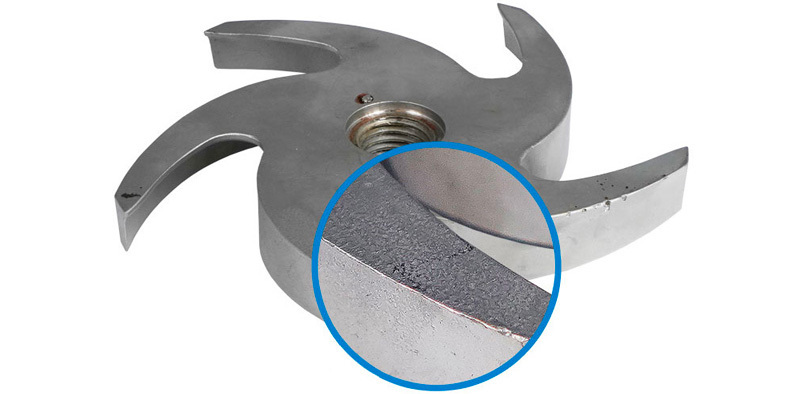Pump cavitation is a common and detrimental phenomenon that can lead to reduced efficiency, equipment degradation, and system failure. It occurs when air bubbles form in the liquid being pumped and then collapse with great force upon entering areas of higher pressure within the pump. The continuous implosion of these bubbles can cause severe damage to pump components, resulting in costly downtime and repairs. Understanding this complex process is essential for anyone involved in the operation or maintenance of industrial pumping systems.
Selecting the right valve is crucial in the effort to prevent pump cavitation. Valves that are improperly sized or matched to the system’s requirements can create flow conditions that facilitate cavitation. Adequate valve selection, on the other hand, ensures smooth fluid flow and helps maintain a pressure balance within the pump, thereby minimizing the risk of cavitation. This underscores the importance of system design and the integration of components that are optimized for the specific requirements of a pumping application.
Key Takeaways
- Cavitation damages pumps and reduces efficiency.
- Proper valve selection is vital for cavitation prevention.
- System design integration is key to maintaining pump health.
Understanding Pump Cavitation and System Design
Proper valve selection is pivotal for mitigating pump cavitation, which involves understanding the dynamics between pressure, vapor formation, and the system design.
Fundamentals of Cavitation
Cavitation in pumps occurs when the pressure in a liquid drops below its vapor pressure, leading to the formation of vapor bubbles. These bubbles then move to areas of higher pressure within the pump where they collapse, causing potential damage to the pump casing and other components. Cavitation can induce vibrations, reduce efficiency, and cause rapid wear.
Net Positive Suction Head (NPSH)
Net Positive Suction Head (NPSH) is a critical factor in preventing cavitation. NPSH available (NPSHa) refers to the absolute pressure at the suction port of the pump, while NPSH required (NPSHr) is the minimum pressure required to avoid cavitation. Engineers must ensure that the NPSHa is greater than NPSHr to prevent vapor bubble formation in the pump.
- NPSHa > NPSHr = No Cavitation
- NPSHa < NPSHr = Potential for Cavitation
Pump and System Design Considerations
When designing pumping systems, engineers need to account for the suction line, turbulence, and altitude that can affect NPSH. Proper system design, including pipe selection and minimizing velocity head, can significantly reduce the risk of cavitation. Design engineers also need to consider the liquid level and pressure head to maintain a favorable pressure differential across the pump.
- Maintain straight pipes at the pump inlet to reduce turbulence
- Ensure adequate liquid level above the pump to maintain absolute pressure
- Consider local altitude as it affects atmospheric pressure and NPSH calculations
Utilizing these design principles helps maintain system integrity and prolongs the lifespan of pump systems.
Valve Selection and its Role in Preventing Cavitation
Proper valve selection is pivotal in mitigating the risk of pump cavitation, which can affect the operational efficiency and longevity of centrifugal pumps. The choice of valves influences the flow rate and pressure conditions within pump systems, directly impacting cavitation occurrences.
Valve Types and Cavitation Control
Valves are integral components in managing the flow rate and pressure within pumping systems. The selection of a valve type is critical to prevent cavitation, which occurs when the liquid pressure falls below the boiling point, causing vapor bubbles to form and implode, potentially causing erosion and damage to metal surfaces. Globe valves, for instance, with their throttling capabilities and spherical shape, can efficiently control flow and minimize pressure drops, reducing cavitation risks. Butterfly valves can also be effective, as some designs incorporate features that allow for the introduction of air, mitigating vacuum conditions that contribute to cavitation.
Valves designed with anti-cavitation technologies, such as drilled cages, can handle varied flow conditions and are suitable for applications in chemical processing where fluid properties may otherwise promote cavitation. Valve selection tailored to specific operating conditions, including fluid temperature, pump speed, and suction conditions, is a critical step in safeguarding against the destructive power of cavitation.
Impact of Valve Selection on Pump Efficiency and Maintenance
Choosing the appropriate valve for pump applications influences more than just the prevention of cavitation it also enhances pump efficiency and reduces maintenance requirements. Cavitation leads to noise, vibration, and shockwave generation, which adversely affects the impellers and volute of a pump, causing premature wear and tear. Pump manufacturers usually provide guidelines on inlet pressure and pump selection to maintain optimal efficiency and protect blade integrity.
With the correct valve, steady flow rates and pressure drops can be maintained, ensuring that pump cavitation is minimized. This consistent operational state keeps the liquid properties at bay from reaching their boiling point within the pump’s environment. Technology in valve design continues to advance, providing tools to optimize conditions and preserve equipment. Consequently, the strategic selection of valves is a key consideration for any system relying on the smooth function of centrifugal pumps.
Conclusion
Proper valve selection is critical to preventing pump cavitation. By ensuring valves create a pressure environment conducive to the pump’s operation, they mitigate the risk of vapor bubble formation and collapse. Furthermore, selecting the right valves contributes to maintaining the pump’s designed flow path, reducing instances of local pressure drops and subsequent cavitation. It remains essential for operators to choose valves that match the pump specifications and system requirements to enhance efficiency and safeguard against pump damage.















